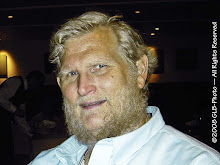 Last week, I introduced you to the first five ways to motivate oneself from the Commentary in 'LensWork' by Brooks Jensen. In that commentary, he discussed creative blocks that photographers encounter in their work. Much of that related to the tendency to procrastinate and ten ways to break free of this block. Last week, we discussed the first five of these motivations, including:
Last week, I introduced you to the first five ways to motivate oneself from the Commentary in 'LensWork' by Brooks Jensen. In that commentary, he discussed creative blocks that photographers encounter in their work. Much of that related to the tendency to procrastinate and ten ways to break free of this block. Last week, we discussed the first five of these motivations, including: - Structure...
- Commitment...
- Peer Pressure...
- Project...
- Visualize...
- Deadlines... Having fixed deadlines is always a good motivator. They are set by others — press deadlines from an editor, presentation deadline from a conference and/or an outside organization, or a submission deadline set by a contest. All of these things tend to motivate most people who value achievement. A missed deadline not only makes us look bad, but it may tarnish our professional reputation "...commit to a deadline — the motivation will follow."
- Publication... Here Jensen refers not to the final completion of the project, but to interim publication via a web site or PDF preview to be used to prepare your audience for your final exhibit and/or article/book. These interim steps become milestones (project management lingo) on the way to our final goal. They not only motivate by virture of being a set of deadlines, they require us, e.g., motivate us, to reach a defined stage of completion by that date.
- Starvation... As Maslow has pointed out, humans, like animals, work with a hierarchy of needs. Survival needs, like eating and shelter, are among the most basic of these needs. They provide a high degree of motivation when we are deprived of them. Unfortunately (or fortunately, as the case may be), the amateur or hobbiest often is deprived of this strong motivation since their livelihood is not depending on our advocation — the professional is often highly motivated by this factor. We will not all quit our day jobs to dedicate ourselves to writing or painting or photography, but we an set other rewards that can substitute for the motivation.
- Mortality... As used by Jensen, this motivation arises from our growing awareness that as we get older, we have less time in which to finish our tasks. This should motivate us to push forward. Rather than putting off a task to tomorrow, whatever we can accomplish today will get us closer to our goal. We do not know exactly how long we have in our life, so there is not time to lose, especially as we get older. Motivation derived from our diminished life expectancy should push us to produce every day...
- Magazine Submission... Depending on our context, this may be any contractual obligation to write an article, prepare an exhibit, produce a work of art; whatever is included in our contract. The motivation derived from finishing a task serves to prod us on to the next task. Few of us have the luxury (or misfortune) of only achieving one tash in our lifetime. Motivation from the completion of one tash becomes the transition to our defining a new goal and a new task. Successful completion may yield a new commission or contract from the same client. We need to start the planning process anew. But we must know when something is done 'well enough' and not get focused on perfection...
Next Week: We will start a new series of explorations into the relationship between attention and motivation, with a special emphasis upon how different elements of your photo composition affect your viewer — and their psychological responses to these photos...

No comments:
Post a Comment